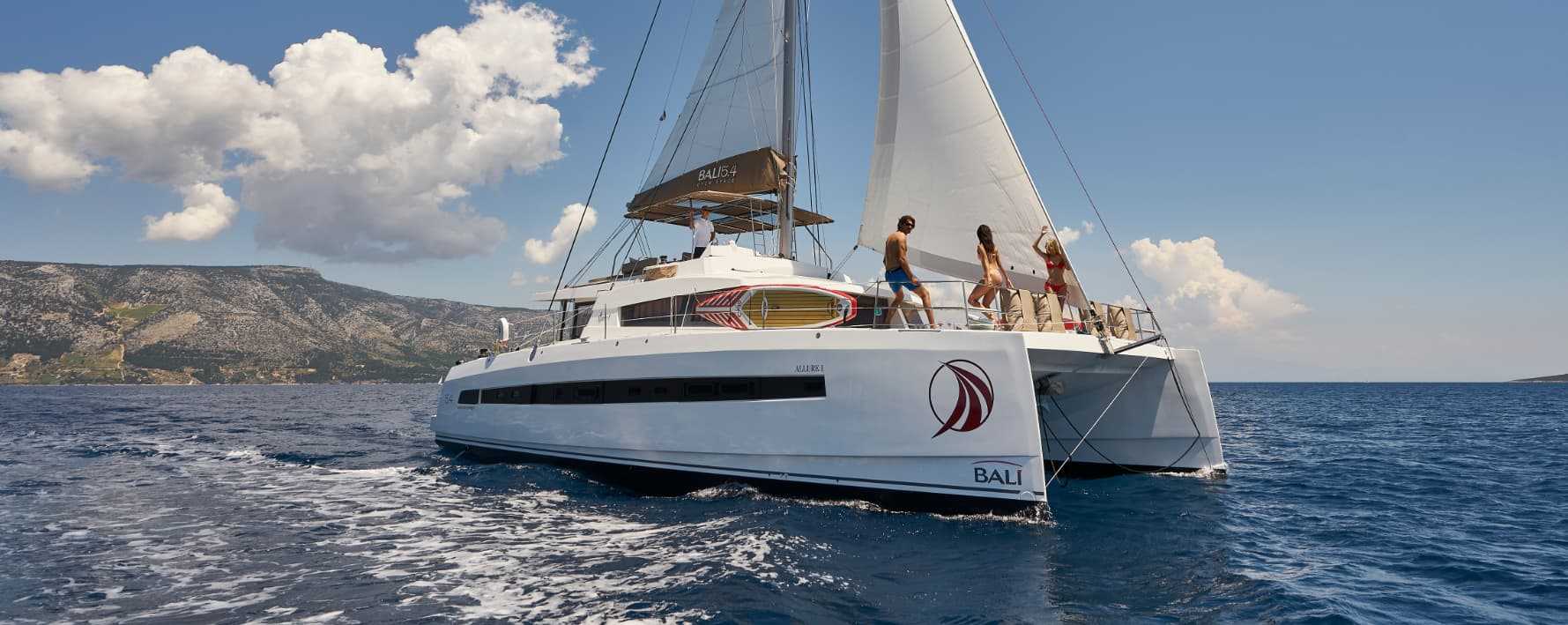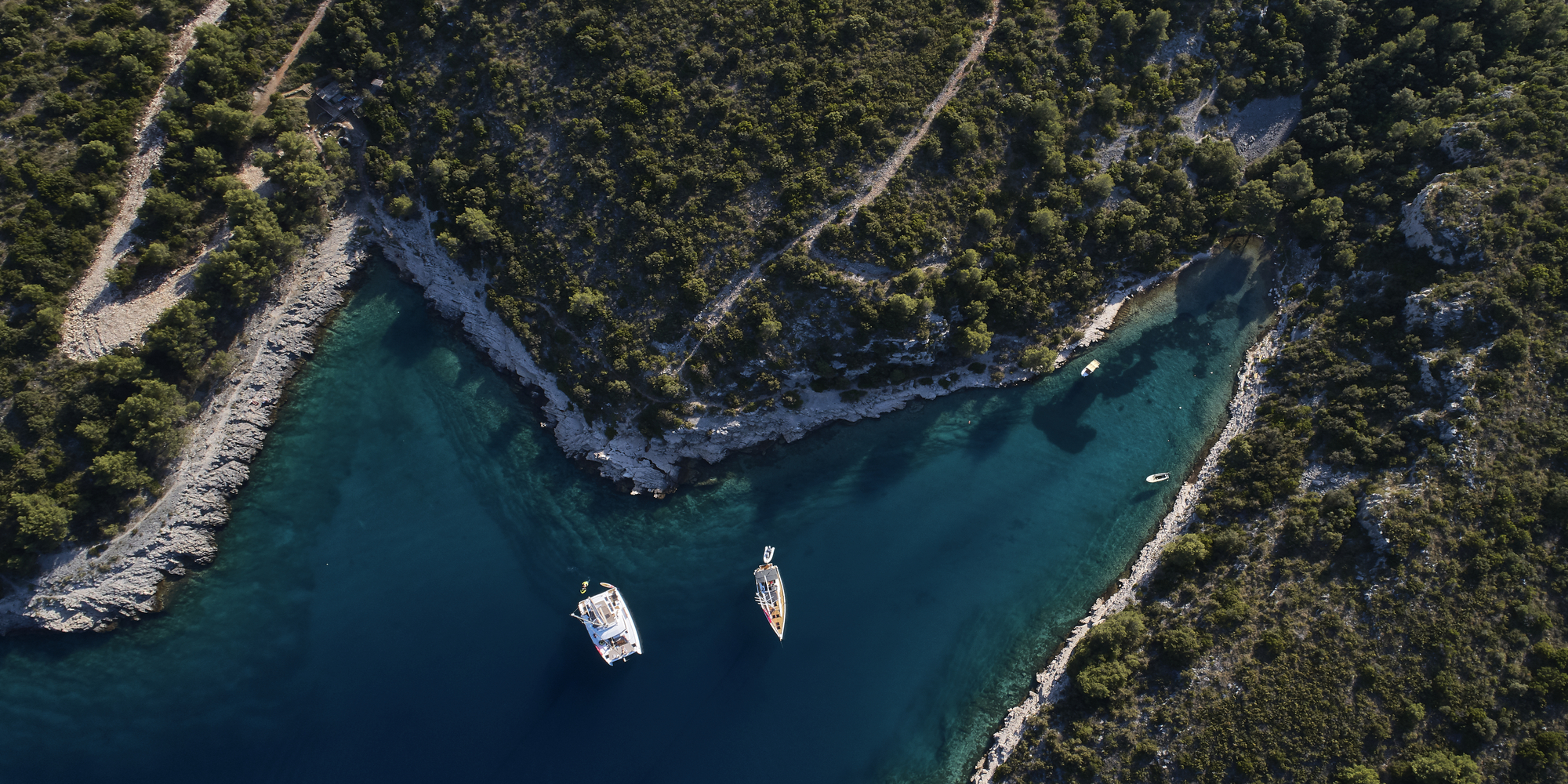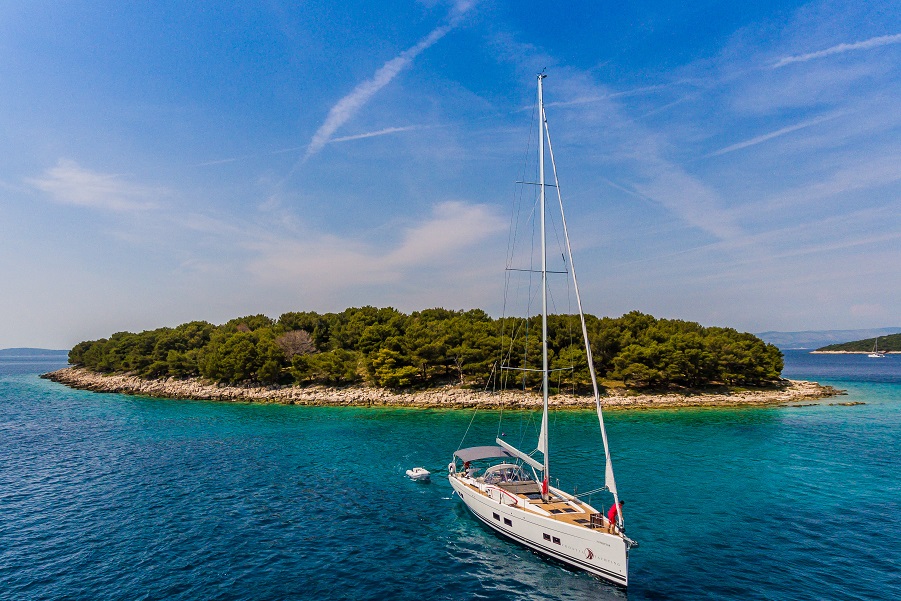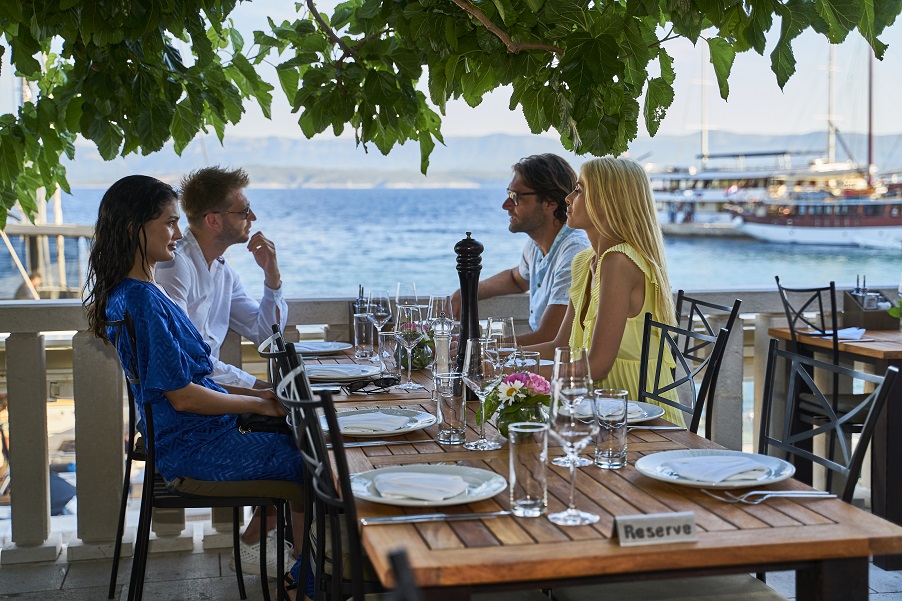Catamaran vs Monohull - Which is Better?

Table of Contents
- Catamarans
- Performance And Sailing Experience of Catamaran
- Stability and Safety
- Maintenance and Cost
- Catamarans we recommend
- Monohull Sailboats
- Performance And Sailing Experience of Sailboat
- Stability And Safety
- Maintenance and Cost
- Sailing boats we recommend
- Construction and Layout differences of Catamarans and Monohull Sailboats
- Catamaran vs Monohull Price Comparison
- Conclusion
Welcome aboard as we go on an exciting journey to investigate the common discussion among the sailors; which boat to choose? Catamaran or sailboat? It is impossible to tell whether a sailboat is better than a catamaran or the other way around. Each one has its pros besides cons and may provide you with an amazing adventure. It all depends on your needs, wishes, abilities and budgets. Join us as we explore the different benefits, designs and many more characteristics of these two vessels. The main difference between monohull boats and catamarans is that monohull boats are classic sailing boats featuring only one hull, whereas catamarans are multi-hull boats. They typically have two hulls.
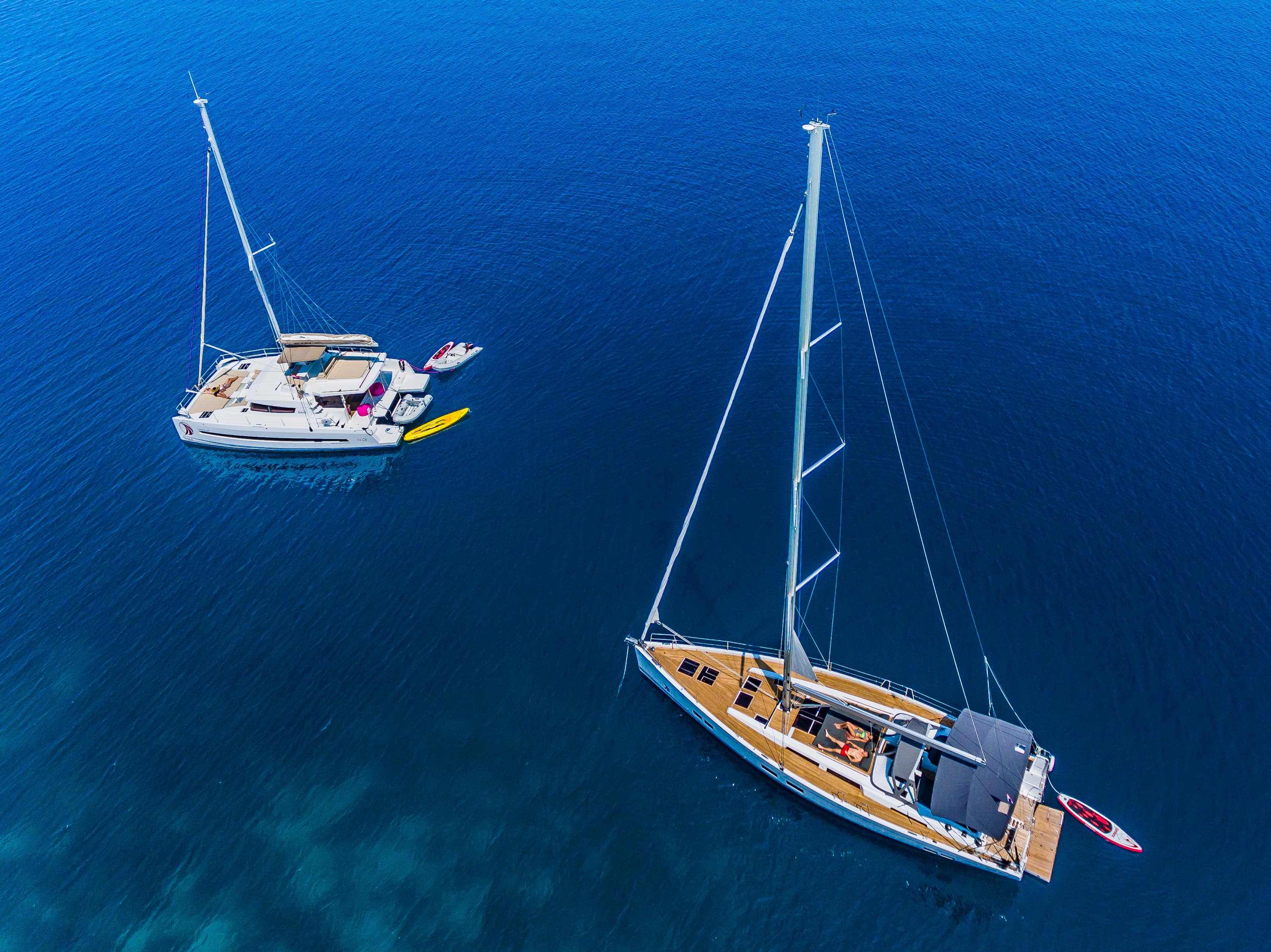
Before we get into more detail about catamarans and sailboats, here's an overview of their advantages and disadvantages. The differences between sailboats and catamarans are explained in detail below.
|
Catamaran vs Monohull Sailboat Comparison |
||
|
Boat type |
Catamaran |
Monohull Sailboat |
|
Speed |
Catamarans are faster due to less hull water resistance |
Sailboats are slower since they have a single hull, but upwind, they can catch up with cats. |
|
Handling and manoeuvring |
Their wide beam allows for rapid turns, and the reduced heel angle offers a stable sailing experience. | Sailboats are more difficult to manoeuvre because they tend to heel in strong winds and have deeper draft |
|
Comfort |
Catamarans are way more spacious and, hence much more comfortable. |
Sailboats are much smaller, thus the cabins and all the other matters that offer greater comfort are also smaller. |
|
Safety |
Catamarans offer increased stability due to their double hulls. |
Its self-righting ability can save lives, but they are still less stable than catamarans |
|
Stability |
The catamaran withstands the waves and force of the sea very effectively, allowing for freer and more stable movement on the deck. |
Even the tiniest waves can be felt here, reducing deck stability compared to catamarans. |
|
Maintenance |
More expensive to maintain, due to the larger number of parts. |
Since they have only one hull, they are easier to maintain. |
|
Cost |
High cost |
Relatively low |
Catamarans
In the next section, we will look at the essential qualities of catamarans, such as their stability, cost, manoeuvrability, maintenance, speed, and other elements that determine their appeal and use.
What is a Catamaran?
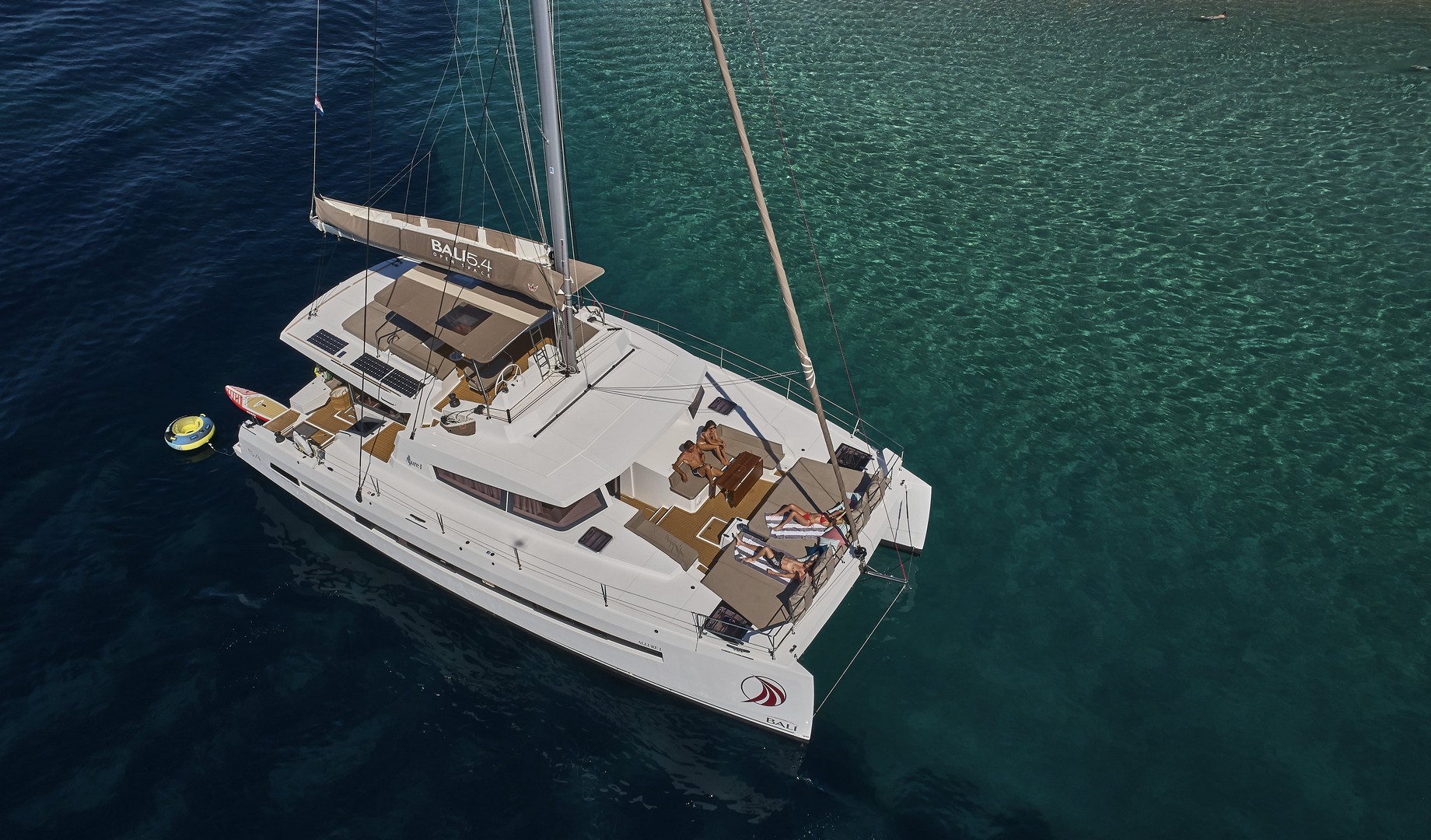
Sailboat with two hulls else called Catamaran, have a broad base supported by two equally spaced hulls and are far more stable than monohull boats. Most individuals use them for leisure purposes, like cruising or fishing.
The term "catamaran" is derived from the Tamil word kattumaram, which means "logs bound together" and refers to a sort of single-hulled raft built of three to seven tree trunks lashed together. The phrase has emerged in English to refer to double-hulled ships.
Cats, not the animal, but the boat, endure significantly less resistance due to their double hulls, allowing them to cut through the water with more ease. They require less propelling power to move than a monohull of comparable size. Cats can be found in many sizes, from small sailing vessels to massive ones used to transport cars.
Now that you've learned the fundamental definition of a catamaran, it's time for an in-depth examination of its qualities and specifications to help you choose a boat that meets your preferences and needs.
Performance And Sailing Experience of Catamaran
When it comes to performances and catamaran sailing experiences, catamarans provide an exciting combination of speed, easy manoeuvre, and comfort that traditional sailboats cannot match. All thanks to their twin halls and shallow drafts, which allow them to explore small waters and secret coves inaccessible to larger vessels, increasing the sense of adventure for both sailors and guests.
SPEED
It usually comes into question, Are catamarans faster than monohulls? So here's a direct answer: Cruising catamarans are typically 25-30% quicker than cruising monohulls. Furthermore, catamarans have a wider hull and larger sail area than monohulls of the same length, allowing them to generate more wind for propulsion. Catamarans also lose less speed due to side waves because they have two hulls, which provide stability and reduce tilting. This combination of characteristics increases their efficiency and speed in most sailing conditions. The lightweight design of catamarans adds to their speed, allowing them to harness the strength of the wind and sail quickly across the waves.
HANDLING AND MANEUVERING
The catamaran has two hulls, twin motors, and two rudders. The sails are similar to those on a sailboat. Catamarans have modest drafts due to their minor keels. The catamaran's structure makes it move quicker and more stable than a monohull sailboat. The normal heeling and swaying detract from the authentic sailing experience on a catamaran. The catamaran will not rock or tilt from side to side like a sailboat would. However, for some crews, this might be a significant advantage. On the other side, a catamaran tends to slap the water.
COMFORT
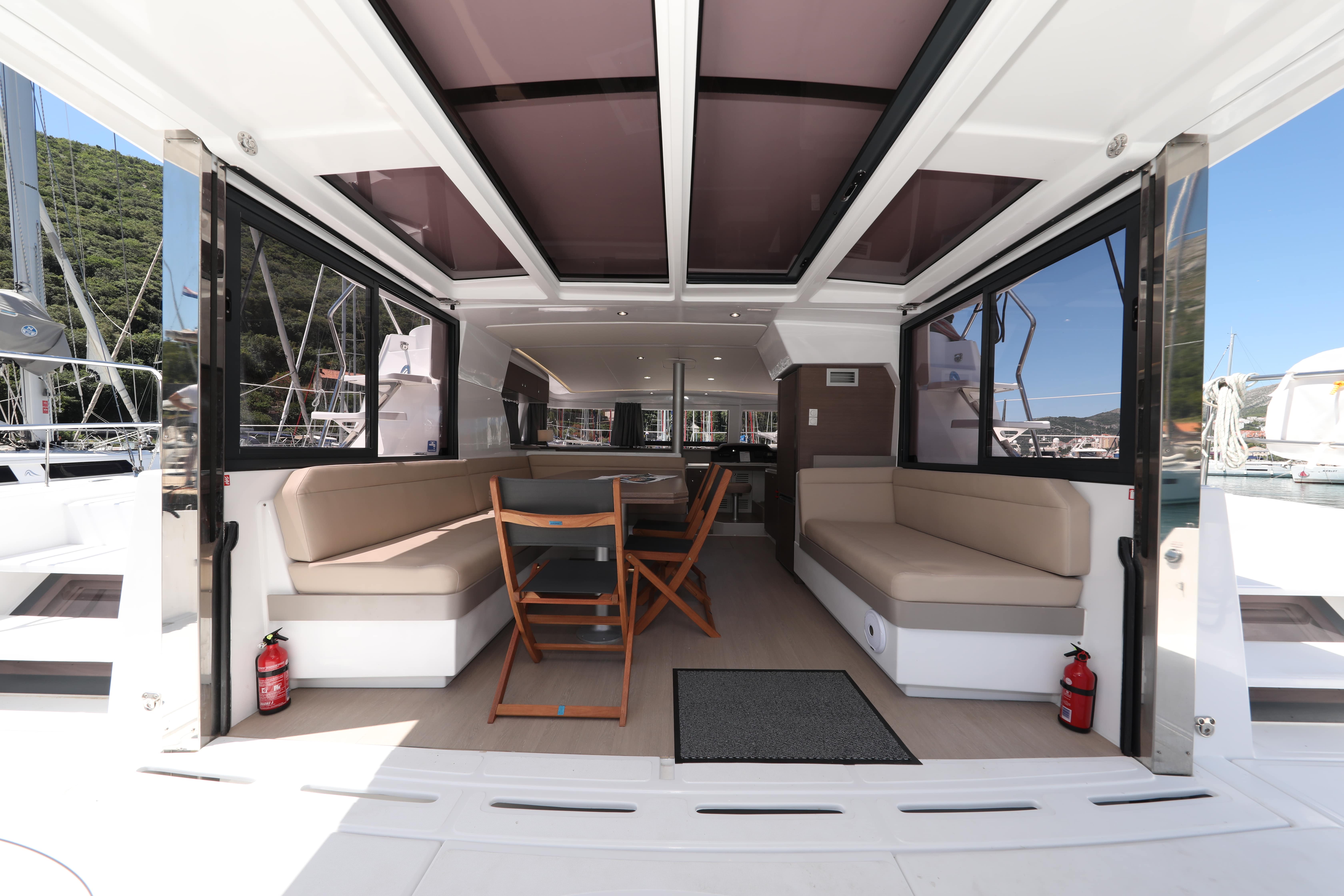
Catamarans, offer plenty of space for lounging, dining, and socialising both above and below deck. The dual-hull design reduces rocking and rolling motions, providing a steady and a comfortable ride even in choppy seas. Furthermore, catamarans frequently include modern amenities like as spacious cabins, fully outfitted kitchens, and attractive areas to relax allowing guests to enjoy all of the benefits of home while surrounded by the beauty of the sea. Whether embarking on a short coastal cruise or an extended ocean adventure, catamarans provide a memorable and delightful sailing experience for everyone.
Stability and Safety
In this investigation of catamaran safety and stability, we look at the question: Are catamarans more stable? By researching their unique layout features and performance characteristics, we hope to shed some light on why catamarans are frequently preferred for their impressive stability and safety at sea.
SAFETY
Catamarans are generally recognised for their strong safety features, making them a reliable choice for both sailors and guests. Catamarans' wide beams also contribute to a solid platform, reducing the impression of heeling and providing passengers with firm footing. Modern catamarans are also outfitted with advanced safety equipment such as life rafts, life jackets, emergency radios, and navigation systems, ensuring readiness for any unexpected events at sea. Catamarans prioritise the well-being of everyone on board by combining stability, buoyancy, and cutting-edge safety equipment, providing peace of mind for both sailors and guests. A catamaran, unlike a sailboat, which is almost impossible to sink. However, the likelihood of this occurring is low, and the boat remains afloat, offering a safe refuge for its crew.
STABILITY
Catamarans are admired for their outstanding stability, which stems from their dual-hull construction, which equally distributes weight across the vessel. Unlike monohull sailboats, catamarans keep mostly level even in heavy waves, reducing heeling and increasing safety. This stability is also critical in preventing seasickness among passengers.
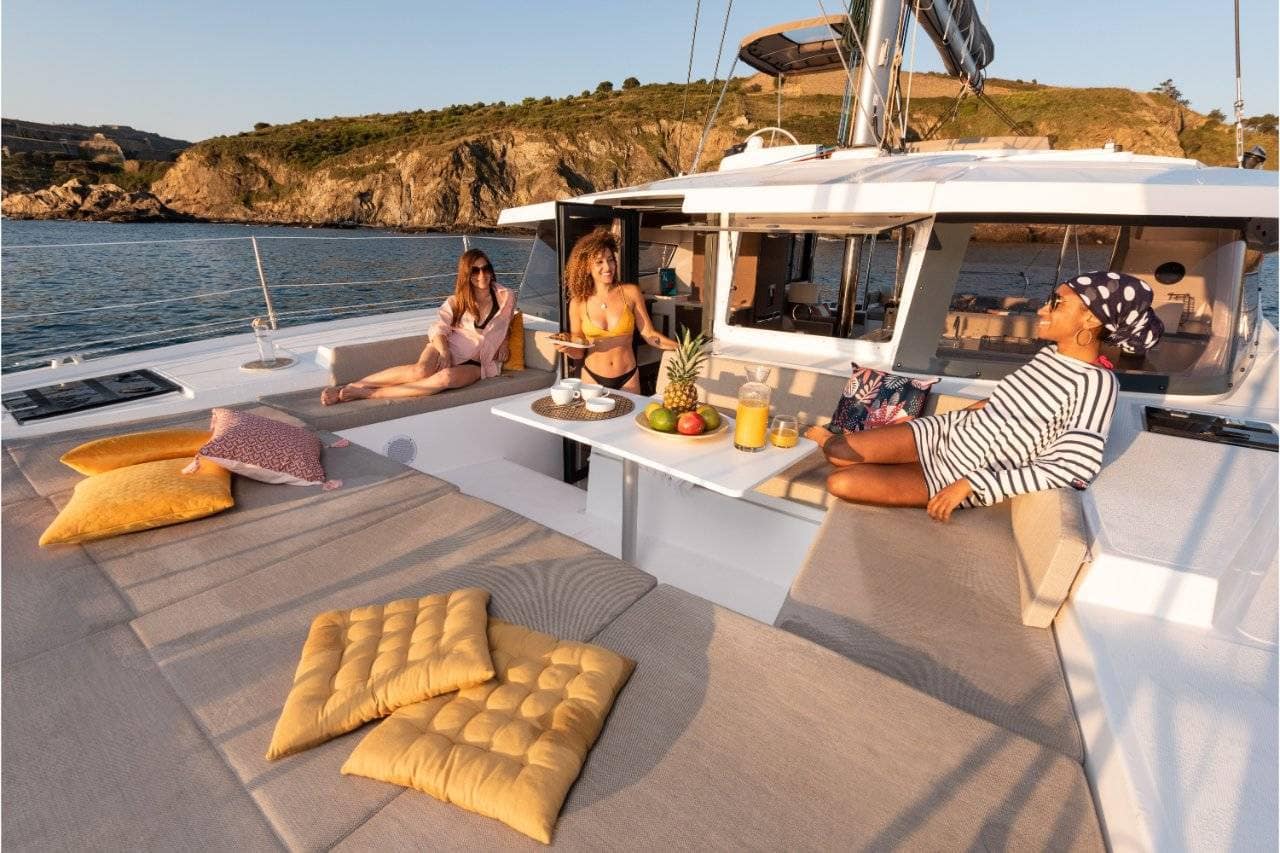
Maintenance and Cost
In the following section, we'll look at the most important components of catamaran maintenance. From basic maintenance to cost management, understanding how to properly care for your vessel is critical to ensure its longevity and performance. Let's look at the necessary maintenance activities and expenses related to owning a catamaran.
MAINTENANCE
A catamaran must be maintained regularly to ensure maximum performance and safety. The tasks include hull cleaning, rigging and sail inspection, engine and propulsion system checks, and ensuring that all safety equipment is in good working order. Promptly addressing any issues helps prevent larger problems, ensuring the catamaran remains seaworthy and reliable.
COST
Catamaran's prices can vary greatly depending on size, brand, age, and amenities. Entry-level smaller catamarans can start at about €100,000, but larger, luxurious variants can cost several hundred thousand euros to several million euros or more for brand-new, high-end boats. When budgeting for a catamaran, it is also important to consider ongoing expenses such as maintenance, mooring fees, insurance, and gasoline. Overall, the cost of catamarans can vary greatly, so purchasers should carefully examine their budget and desired characteristics before selecting a vessel. For more information on Bali catamarans, you can explore models at Croatia Yachting
|
Catamaran Pros and Cons |
|
|
Pros |
Cons |
|
Excellent stability |
Higher purchase cost |
|
Spacious interior |
Limited docking options |
|
Smooth sailing experience |
Requires more space to manoeuvre |
|
High-speed capabilities |
Slower upwind |
|
More rooms |
Vulnerable to strong winds when moored |
|
Reduced fuel consumption |
Increased maintenance costs |
Catamarans we recommend
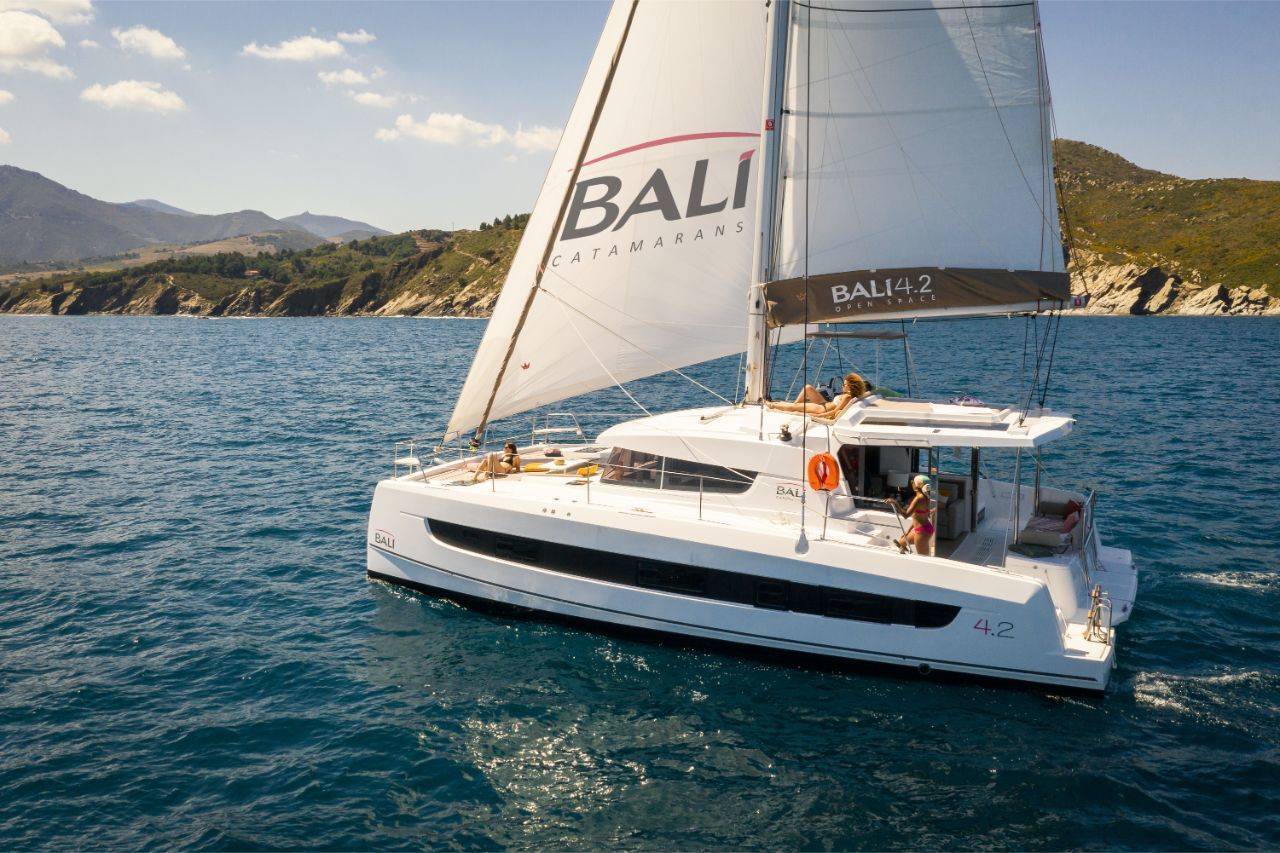
Bali 4.2
The Bali 4.2 catamaran is famous for its creative design, large layout, and high performance. It features a distinctive open-concept layout that blends indoor and outdoor living spaces, as well as comfy sitting rooms and a modern galley. Its lightweight build and efficient hull shape allow for quick handling and exciting sailing. The Bali 4.2 is perfect for long cruising and entertainment, providing a luxury and unique sailing experience.
Monohull Sailboats
In this article, as in the catamaran part, we'll look at the essential characteristics of monohull sailboats, including their stability, price, handling, maintenance requirements, speed possibilities, and other features that contribute to their attractiveness and functionality.
What is a Monohull Sailboat?
Monohull sailboats feature a single-hull design, providing a typical sailing experience with a distinct heeling sensation. While monohulls are not as stable as catamarans, they are adaptable and can be used for activities like as racing, day sailing, and coastal cruising. They enable excellent upwind sailing and are favoured for their dynamic feel under sail, making them popular among sailors worldwide.
While requiring a similar amount of power as catamarans, they may experience significantly more resistance. Monohull sailboats are available in a variety of sizes and layouts, ranging from classic sailing yachts to modern racing boats to suit a wide range of preferences. Whether you prefer old or modern, there is a monohull sailboat to suit your sailing needs.
Now that you've learned about the characteristics of monohull boats, you may continue your search for the ideal vessel to meet your sailing goals and preferences.
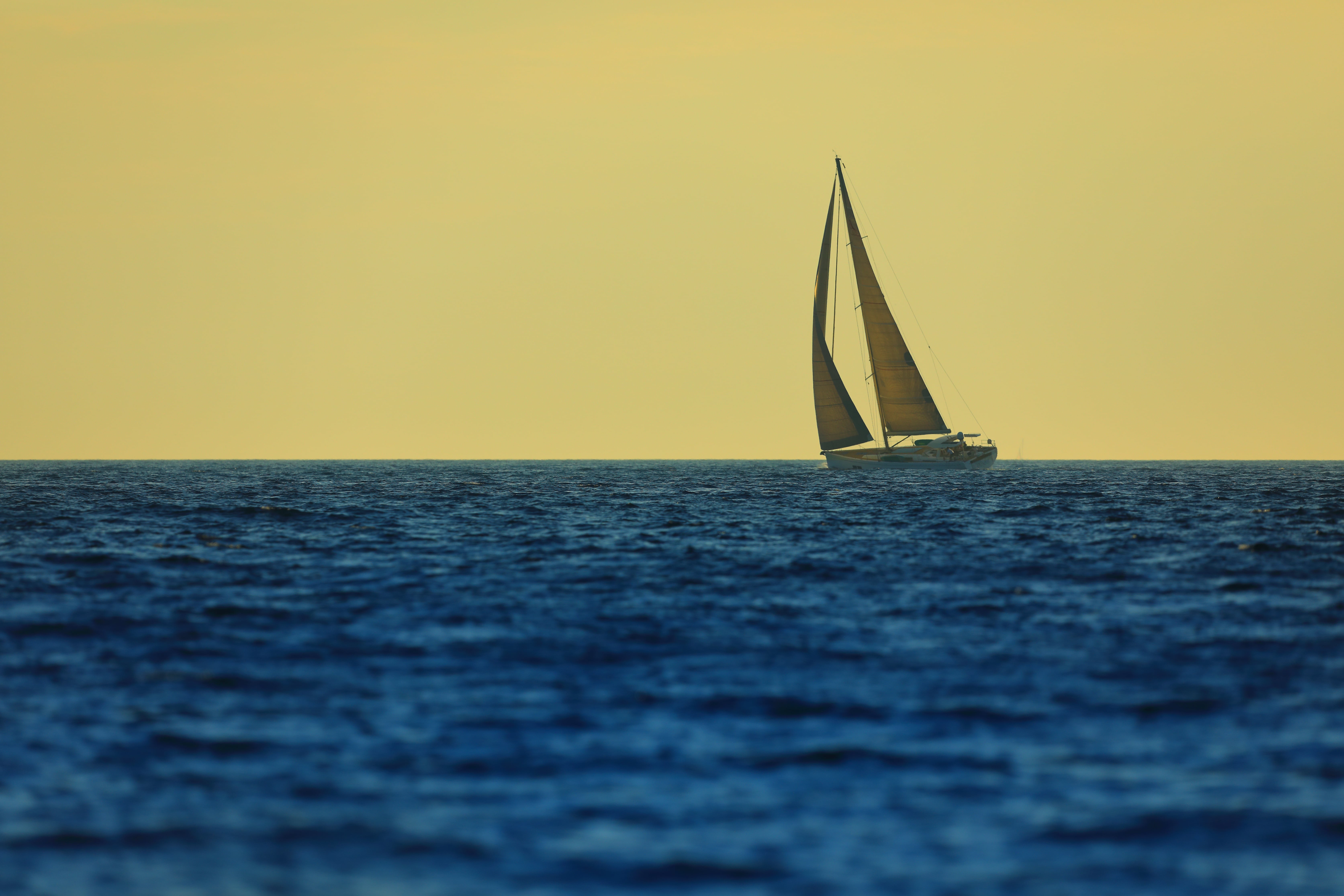
Performance And Sailing Experience of Sailboat
Monohull sailboats provide a timeless sailing experience, distinguished by their classic design and great performance on the water. Monohulls, with their single hull cutting through the waves, provide sailors with a traditional and responsive feel, allowing for accurate manoeuvring and a strong connection to the water.
The boat's elegant lean under wind pressure produces a thrilling sensation, and the monohull's ability to heel adds excitement to the sailing experience. Monohull sailboats provide sailors with a dynamic and unique sailing experience, whether racing over the open ocean or leisurely cruising along the shore.
SPEED
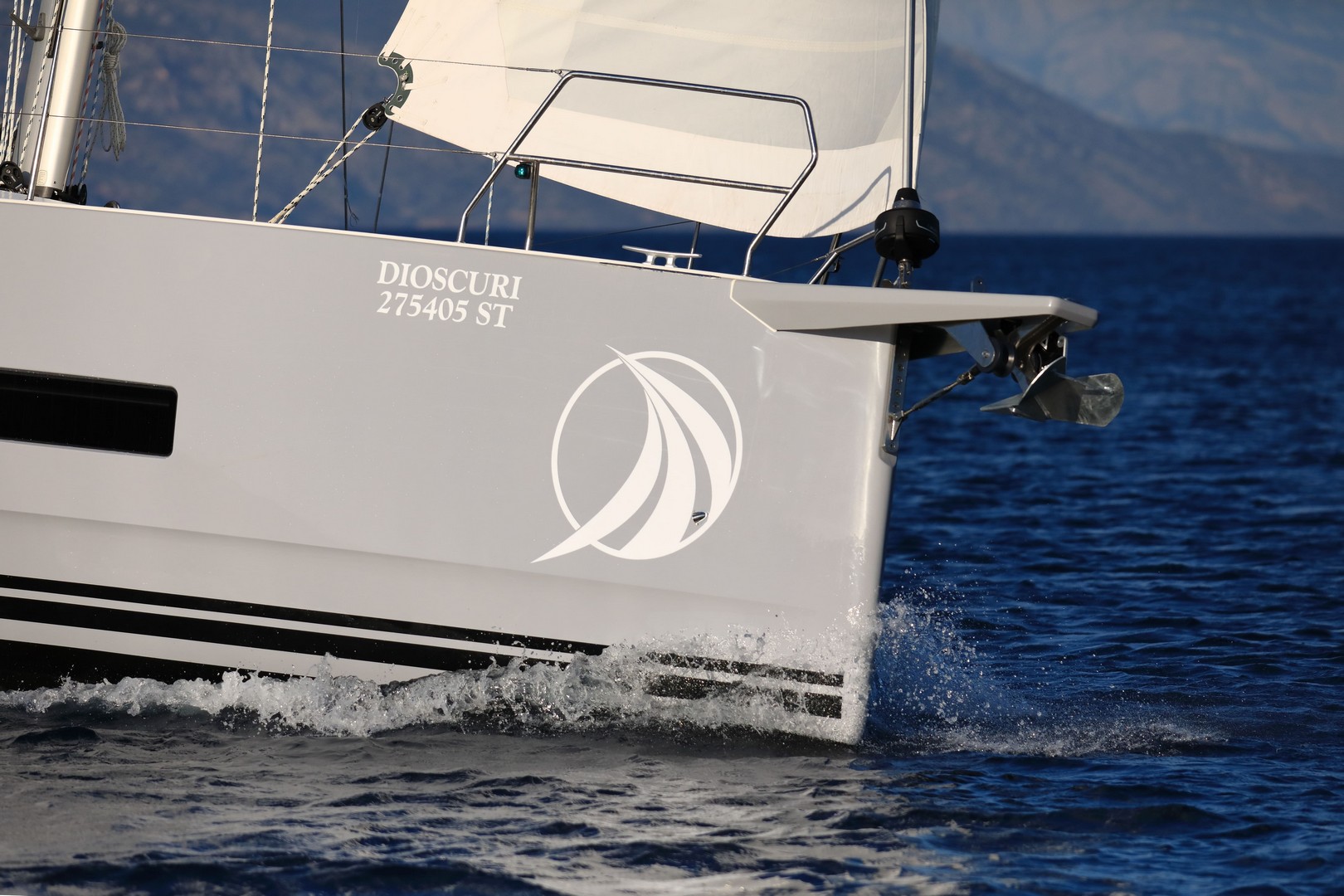
Monohull sailboats are designed to work well together with the sailing elements. However, they do not have a decreased wetted surface area and are significantly slower than catamarans. When determining the speed of a sailboat, it is important to consider the activities for which you will use it. The average speed of cruising sailboats is 4-6 knots, with a top speed of 7 knots. They're the best option for sailing upwind.
HANDLING AND MANEUVERING
Handling and manoeuvring a sailboat requires a comprehensive approach, including expert sail modifications and clever steering to harness the wind's power. Tacking and gybing are two skills that must be mastered to sail through various wind angles and change situations effectively. A monohull can be more manoeuvrable because you aren't dealing with two hulls, it also has a larger hull displacement, which is critical in lessening the negative impacts of crosswinds, particularly in tight situations.
COMFORT
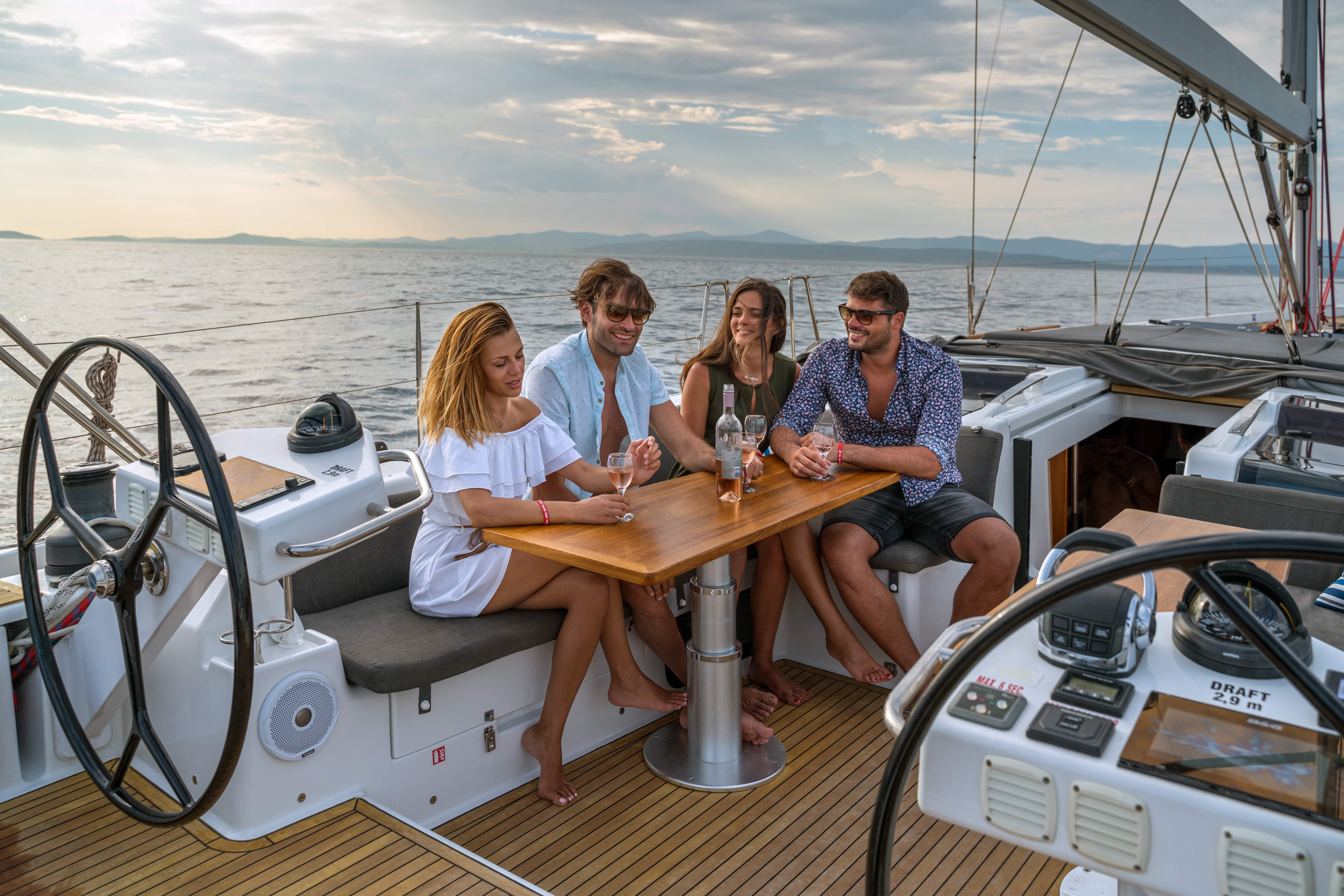
Monohulls are slightly less comfortable than catamarans because it does not slap or pound the water like a catamaran. Its narrow design mostly relies on the calmness of the water to provide a pleasant trip. The crew on the sailboat gets soaked right away with a gust of waves, whereas the catamaran allows you to hide and keep dry.
Stability And Safety
In this part, we will discuss the stability and safety of monohull sailboats. We will highlight key aspects affecting the stability of these vessels, including architectural design, centre of gravity, stabilizing devices, and other factors. We will also explore how these factors influence sailing safety, including resistance to heeling, manoeuvring capabilities, and stability in various weather conditions.
SAFETY
The most significant aspect of a monohull in terms of safety is its self-righting abilities. These characteristics make monohull sailboats better adapted to rough and heavy weather, and they are nearly impossible to overturn, making them exceptionally safe at sea. The deeper draft and keel provide additional safety. They are also easier to manoeuvre in tight locations, although they may be more cramped and have less visibility, resulting in increased crew fatigue and disorientation.
STABILITY
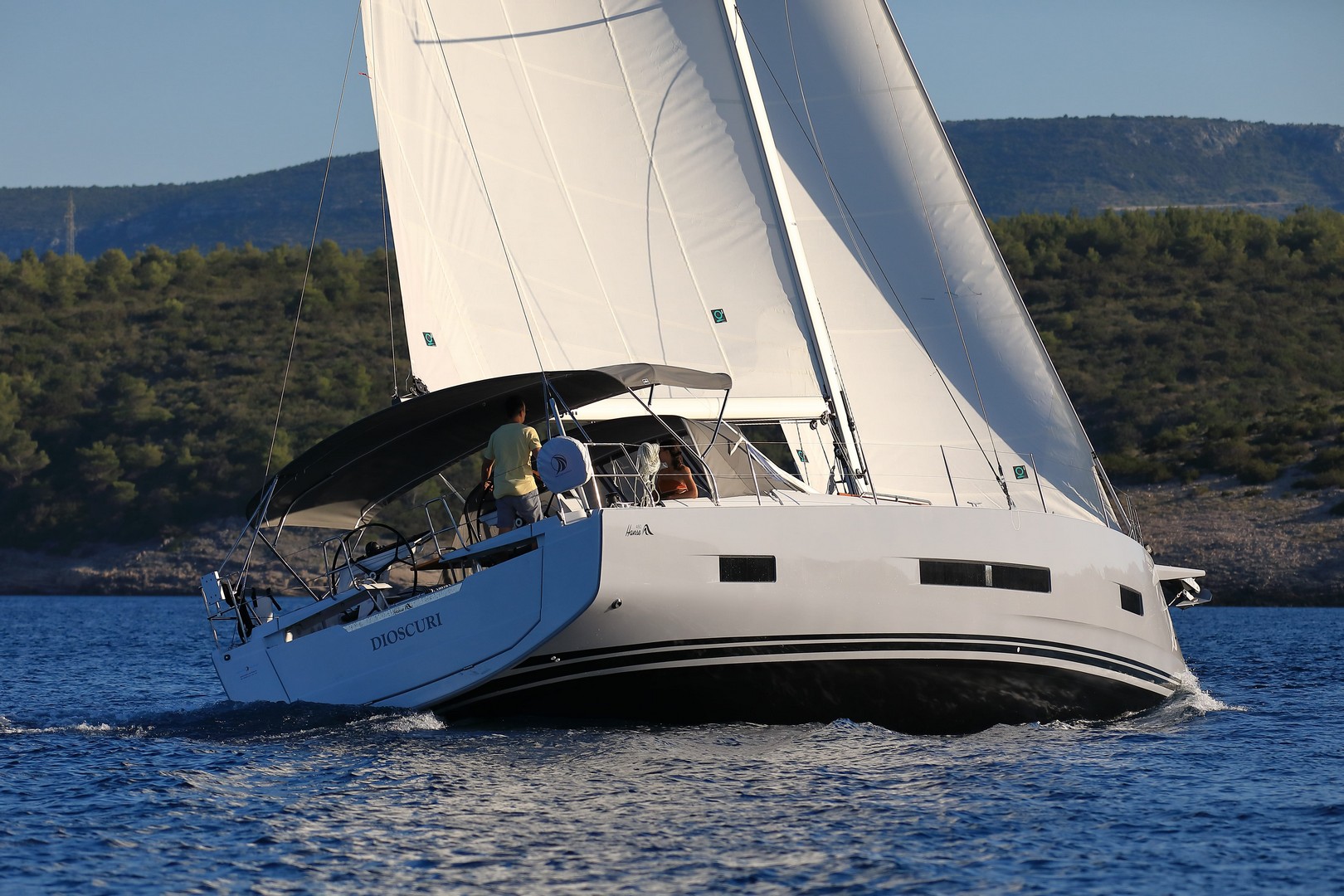
Its design provides less stability, as a result, you are more likely to experience the affects of the waves while sailing. Some people like the movement, while others may feel seasick. It's all about striking the correct balance between enjoying the sea and remaining stable on the waves.
Maintenance and Cost
Maintaining a monohull sailboat requires frequent maintenance to keep it in good condition and safe. This includes cleaning, inspecting, and maintaining various components such as the hull, rigging, sails, and engine. Budgeting for common operations like haul-outs, bottom painting, sail repairs, and engine maintenance is critical. Setting aside money for unplanned repairs or upgrades is also a good idea for a smooth sailing experience and pleasure of your boat.
MAINTENANCE
Maintaining a monohull sailboat is critical for both safety and performance. Regular responsibilities include hull cleaning, antifouling paint application, rigging inspection, and deck maintenance. The engine, electrical, safety equipment, sail, and plumbing systems should all be examined regularly. Fortunately, the costs of maintenance and repairs are greatly reduced when compared to those of a catamaran.
COST
The price of a monohull sailboat varies greatly based on criteria such as size, age, condition, brand, and included equipment. Typically, smaller used monohull sailboats can be found for as little as a few thousand euros. When selecting to purchase a monohull sailboat, take in mind that they are easily accessible on the market, therefore their prices may be slightly lower than catamarans. Again, their minimal maintenance cost will work in your favour.
If you're interested in exploring Hanse sailboats specifically, you can find a selection of them available for purchase here.
|
Monohull Sailboat Pros and Cons |
|
|
Pros |
Cons |
|
Stable in rough seas |
Less spacious interior compared to multihulls |
|
Better upwind performance |
Heeling (leaning) can be uncomfortable for some |
|
Easier to handle in tight spaces |
Slower compared to multihulls |
|
Classic sailing experience |
Limited living space for long-term cruising |
|
More affordable to purchase and maintain |
Limited stability when at anchor |
Sailing boats we recommend
Hanse 460
The Hanse 460 sailboat model is known for its amazing balance of performance and comfort. Its roomy and well-designed interior provides plenty of living space as well as a pleasant saloon for entertaining. Its modern hull design and powerful kit provide spectacular sailing experiences, whether cruising or racing. New features, like as improved sail handling systems, add to its appeal, making it an excellent choice for sailors seeking both style and functionality.
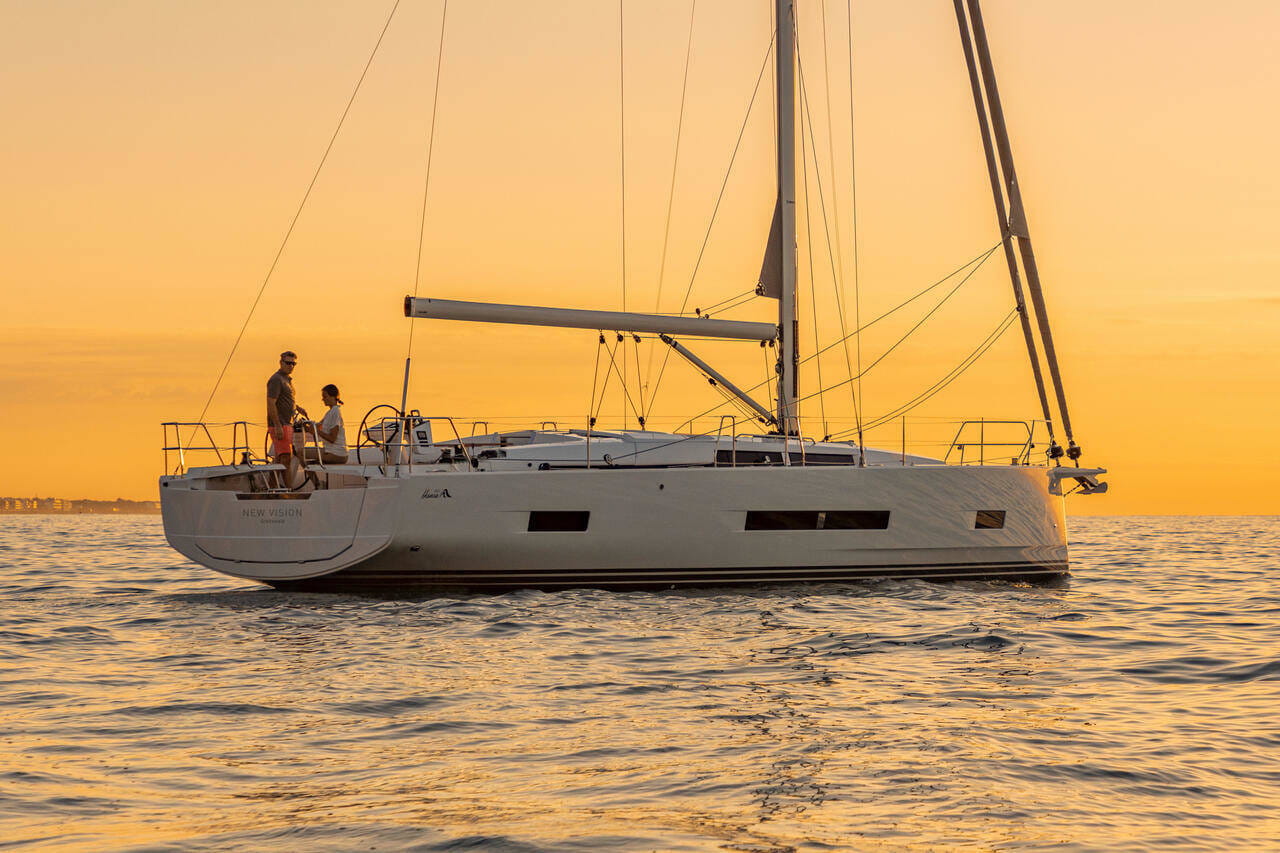
Construction and Layout differences of Catamarans and Monohull Sailboats
Catamarans have double hulls connected by a deck, resulting in inherent stability and a spacious configuration with separate rooms. Catamarans, unlike monohull sailboats, rarely have keels. Instead, they may use daggerboards or centerboards to boost upwind performance while reducing leeway. This design enables catamarans to have shallower drafts, making them ideal for cruising in shallow waters.
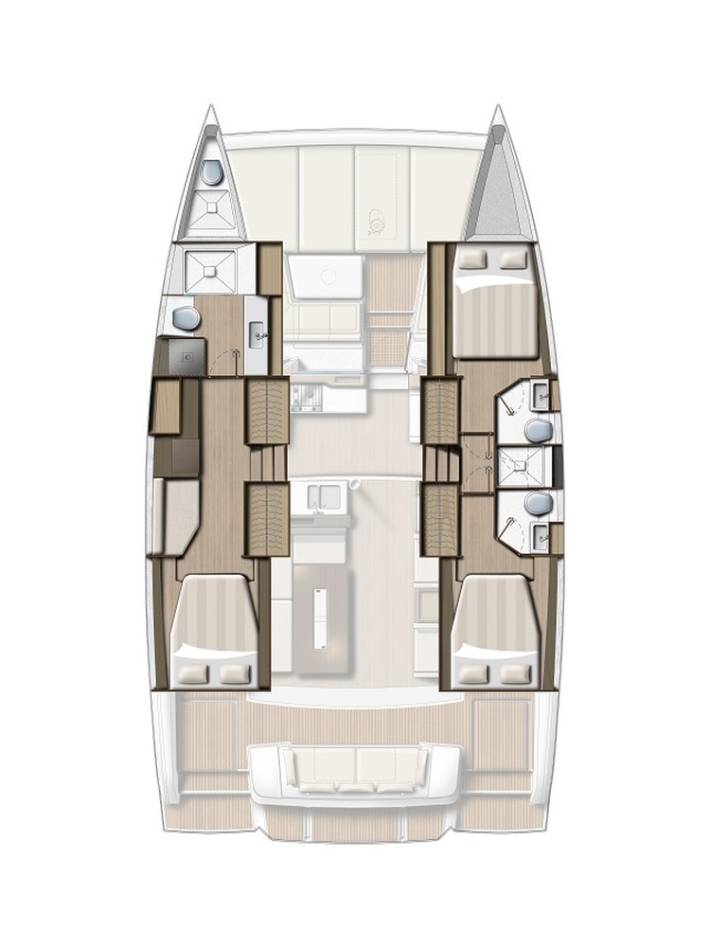
Monohull sailboats, on the other hand, have a single hull with a keel that extends beyond the waterline, reducing leeway. While monohulls have less spacious interiors than catamarans, they provide a traditional sailing experience with superior upwind performance.
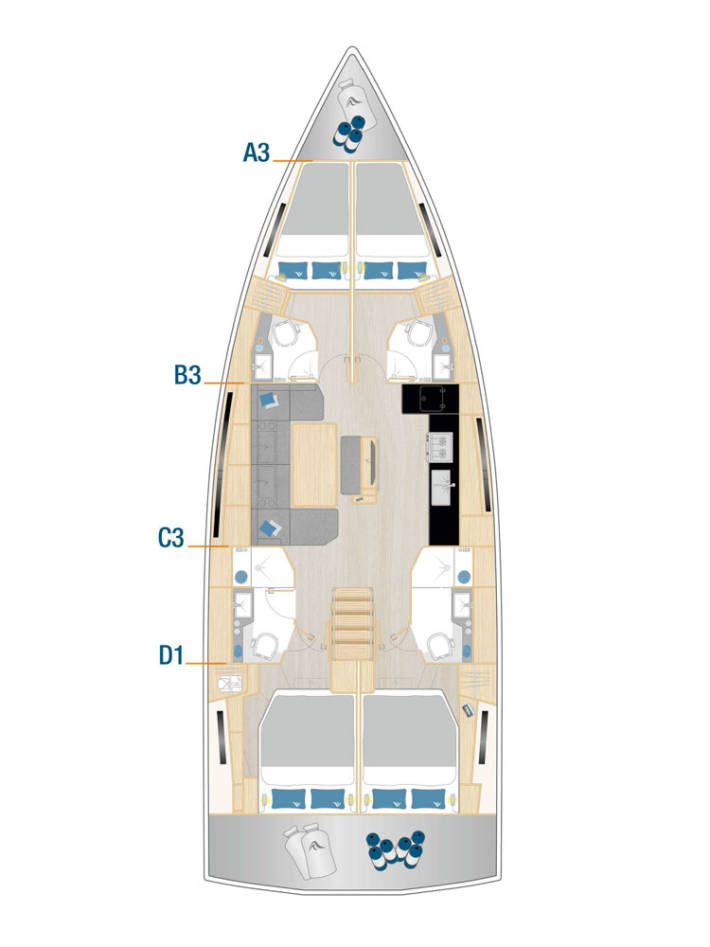
Catamaran vs Monohull Price Comparison
Who is more expensive: monohull or catamaran?
Catamarans are typically more expensive than monohulls due to their bigger size, multiple hulls, and additional amenities, which results in higher maintenance and original purchase expenses. However, brand, size, age, and specific features can all influence the price comparison between the two types of sailboats. For additional Bali Catamaran or Hanse Sailboat models, you can explore the Croatia Yachting website. However, here, we'll provide you with a comparison of prices between the listed models.
| Catamaran vs Monohull Price Comparison | |||
|
Category |
Model |
Sales Price |
Charter Price |
|
Small Sailboat |
Hanse 348 |
||
|
Modern Sailboat |
Hanse 460 |
||
|
Luxurious Sailboat |
Hanse 548 |
||
|
Large Sailboat |
Hanse 588 |
||
|
Small Catamaran |
Bali Catsmart |
||
|
Modern Catamaran |
Bali 4.2 |
||
|
Luxurious Catamaran |
Bali 4.4 |
||
|
Large Catamaran |
Bali 5.4 |
||
Conclusion
Finally, the discussion between catamarans and monohull sailboats covers a wide range of topics, including construction and performance, as well as comfort and personal taste. Catamarans have spacious layouts, inherent stability, and shallower drafts.
Monohull sailboats, on the other hand, provide a more traditional sailing experience as well as superior upwind performance. Each type of boat is designed to accommodate a variety of sailing techniques, preferences, and priorities. Whether one prefers the speed and comfort of a catamaran or the tradition and performance of a monohull sailboat ultimately comes down to personal preferences and goals on the water.
For those interested in exploring further and perhaps experiencing these vessels firsthand, I encourage you to visit the Croatia Yachting where you can charter or buy Bali and Hanse boats.
Is catamaran more comfortable than a monohull sailboat?
Catamarans have less rocking motion, resulting in a smoother ride than typical monohull boats. Their spacious layouts frequently contain many cabins and sitting areas, which improve passenger comfort on sailing voyages.
Is a monohull sailboat faster than a catamaran?
The speed of a monohull sailboat versus a catamaran is determined by a variety of factors, including wind conditions, sail design and hull efficiency. Monohulls are often faster in light winds and upwind sailing, though catamarans excel in reaching and downwind courses because of their wider beam and reduced drag.
Can catamarans handle rough seas?
Catamarans are well-equipped for handling rough seas because of their wide beam and dual hull construction, which increases stability and reduces the chance of capsizing. Their lightweight design and streamlined shape also contribute to improved performance in rough sea conditions.
Can catamarans sail upwind?
Catamarans meet three major challenges when sailing upwind: lateral resistance, apparent wind generation, and sheeting angle. These weaknesses might be especially annoying, but they are all fixable.
Do catamarans use less fuel?
Catamarans use less fuel than traditional monohull boats because of their aerodynamic form and reduced water resistance. The twin hulls of a catamaran improve fuel efficiency by distributing weight more evenly and needing less power to move across the water.
Are catamarans better for the ocean?
Catamarans are frequently regarded as superior for ocean travel due to their stability, speed, and efficiency, making them ideal for ocean journeys.
What is the minimum size catamaran for ocean sailing?
The minimal-size catamaran for ocean sailing is normally 27 to 35 feet long. This size ensures stability, safety, and adequate space for necessary equipment and supplies during extended sea cruises.
